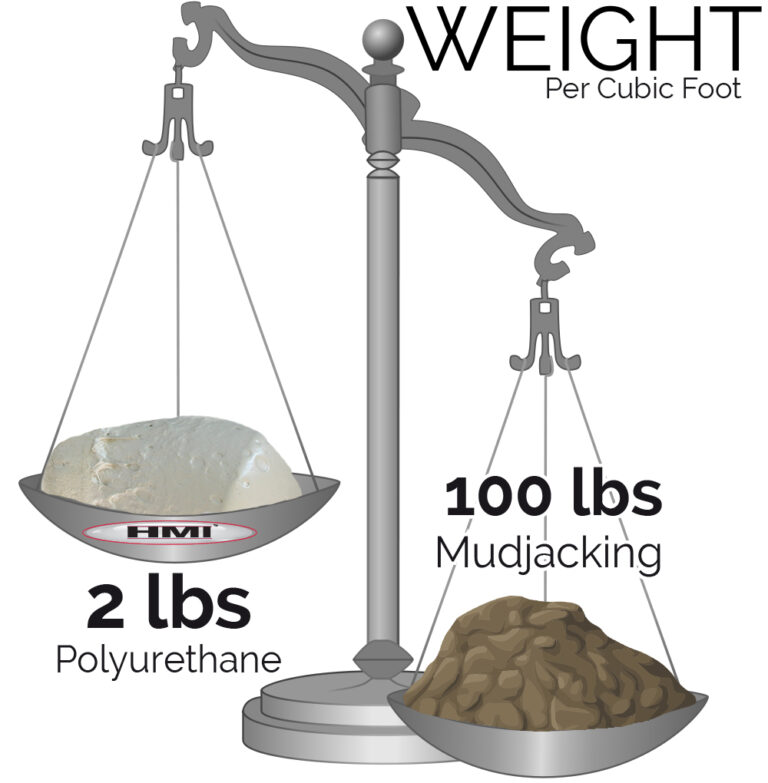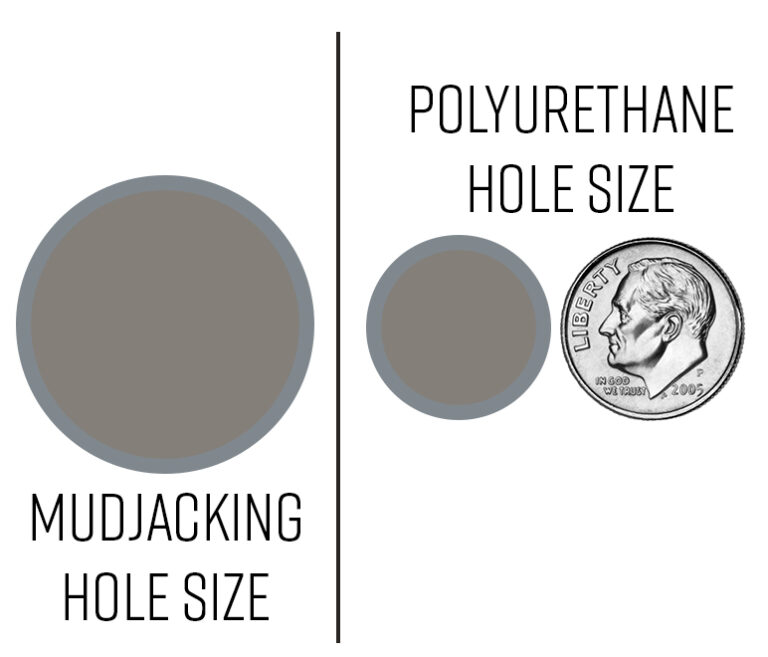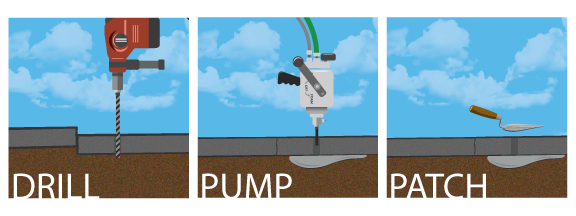The Things Customers Want to Know
Most frequent questions and answers
What is the average cost of concrete lifting ?
We take many things into consideration when providing a quote for concrete lifting or stabilization including the size of the concrete area, condition of the slabs, and how much the concrete has settled. Due to just these three things, no project is exactly the same as another so therefore giving out averages is next to impossible to do. Regardless of the job size though concrete lifting is generally less than half the cost of concrete replacement.
How long does it take to lift concrete?
Most concrete lifting or stabilizing projects can be finished in one day or less. In most cases you’ll have a level, fully functional concrete surface within just a few hours! The only thing that may delay your use of the concrete is if you choose to have us seal the cracks to prevent future water erosion. Although the concrete is ready for action when the project is finished, the sealant takes longer to dry so we recommend not walking on or driving on the sealant for several hours.
What’s the difference between using mud and foam?
Mudjacking utilizes a clay/mud material pumped beneath the concrete slab to achieve lift. The mudjacking material weighs on average 100 lbs. per cubic foot. Mudjacking requires a 1″ hole to inject material, more frequent holes to be drilled and can take several hours or even days for the material to fully cure. Mudjacking is cheaper to have done vs polyjacking but will not last as long as polyjacking. Mudjacking typically will only last 1-5 years before settling reoccurs due to the composition of the mud breaking down and washing away.
Polyurethane injection (Polyjacking) uses a smaller injection hole of 5/8″, requires fewer holes to be drilled, cures in a matter of minutes, and carries a much lower risk of additional settling later due to its light weight properties (about 2 lbs. per cubic foot). Polyurethane injections use a two-part mixture injected beneath the concrete to create an expanding foam to achieve lift. By the time the technician has finished lifting and cleaning up the work area the material is already cured and safe for regular traffic again. Polyjacking is less likely to experience additional settling later as the polyurethane foam will never lose density or shrink, and the material does not breakdown or wash away with moisture.
When is concrete lifting not an option?
Polyurethane can cure in warm, cool, and even wet conditions. There are just a few situations where concrete lifting is not advised. One example of concrete lifting not being recommended is if a slab is cracked into multiple small pieces as it becomes very difficult to lift all of the pieces
evenly. Polyjacking is also not recommended when the weather is below-freezing and the ground has frozen.
What causes concrete to sink or become uneven?
The most common reason for concrete to settle is due to moisture. As the soil beneath the concrete gets wet and dries out it compacts the soil or leave voids in the soil that allow the concrete to settle. To avoid settled concrete, it is recommended to correct drainage near the concrete by extending your rain gutters away from the concrete and maintaining a positive grade. Soil can settle naturally over time or repeat heavy traffic on the concrete above the soil may compress and cause the concrete to sink. Animals digging the dirt out from under the concrete is another frequent cause of settlement.
What are the steps to getting on the schedule?
Request a quote from the link on our website or by calling us. We will take your name, address, phone and email info, as well as a description of the concrete issue. (The email is very important
in that we send completed quotes as well as invoices via email.) You will be scheduled based on our earliest availability combined with your convenience (usually in under a two-week timeframe). On the day of your quote, the technician will take photos and measurements of the area(s) of concern, test for voids and answer any questions you may have. He will bring his notes back to the office and finish the computations then send you the quote via email (usually within 24 hours). If you have any questions about the quote you receive, please call or email us and we will go over the quote with you or answer any questions. If the quote is acceptable to you, please follow the link on the email to officially accept the quote and we will schedule your project for the next available day.
Is maintenance needed after the concrete is lifted?
When our work is completed, it will be your responsibility to caulk/seal the seams of the sections that were repaired (unless you chose to have us do that task). The exposed areas of the concrete
should be backfilled as well to prevent future erosion and sinking. As previously mentioned, preventing water from going under the slab is key to preserving the repaired slab so check your downspouts to assure the water runs away from your concrete slab.
How common is it for the concrete to settle again?
Within the first few years after concrete has been poured the soil compacts naturally and will not experience such a dramatic compaction again unless the soil is disturbed, flooded, or significant weight is added. Polyjacking is less likely to experience additional settling as the material weighs in at about 2 pounds per cubic foot and is hydrophobic so it will not break down or wash away due to the weather.
What concrete can be lifted or stabilized?
Solid slabs of concrete can be lifted and stabilized. Gravel or blacktop areas are unable to be raised. Slabs of concrete that are badly cracked or broken into small pieces may also be too badly damaged to lift.
WHAT IS POLYJACKING?



